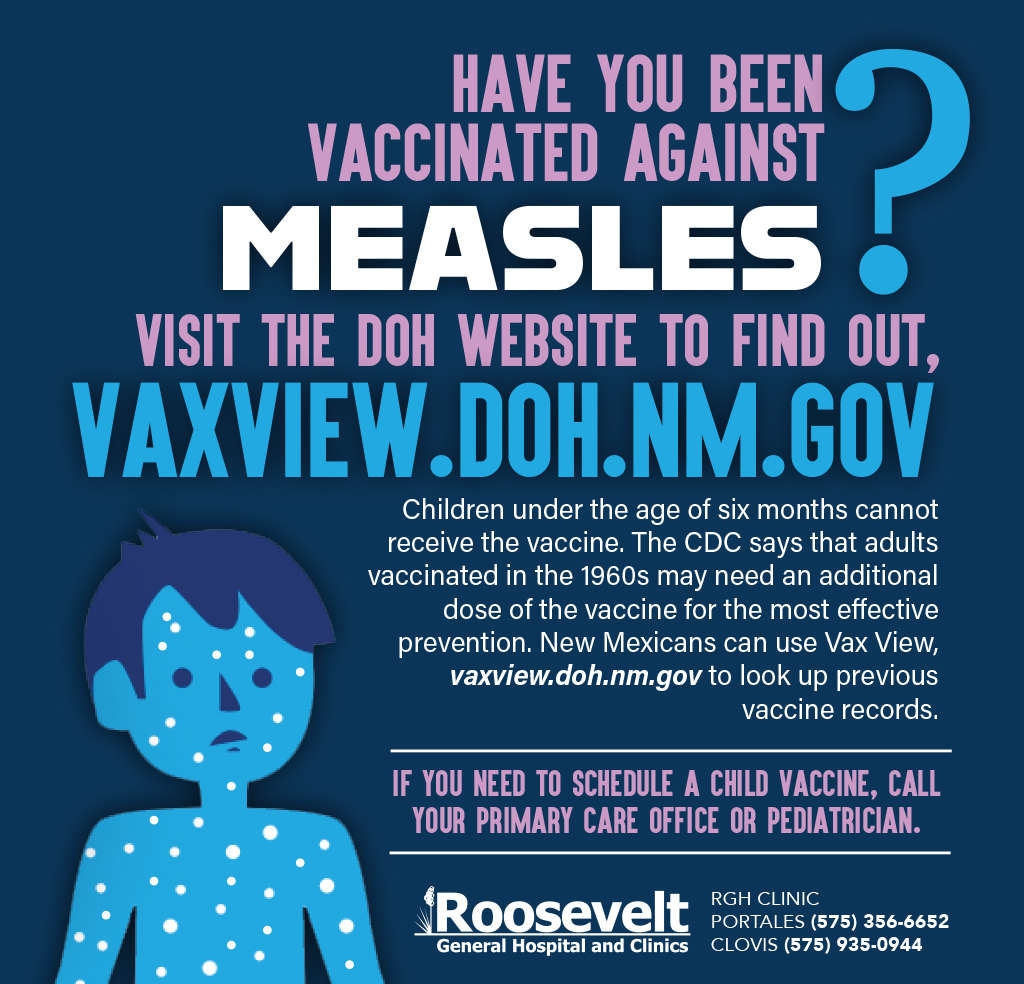NOTE: The U.S. production forecasts in this report are based on conditions as of August 1. Any
potential impacts from severe weather that occurred after August 1 will be reflected in future reports.
WHEAT: The outlook for 2020/21 U.S. wheat this month is for increased production offset by
lower imports, higher exports, and lower ending stocks. U.S. wheat production is raised 14
million bushels to 1,838 million as increased Hard Red Spring (HRS) and Durum production
more than offsets lower winter wheat production as indicated by the NASS August 12 Crop
Production report. Imports are lowered 10 million bushels this month to 130 million on the larger
HRS supplies. Estimated food use for 2019/20 is lowered fractionally to 962 million bushels,
based on the latest NASS Flour Milling Products report. Food use for the 2020/21 market year is
lowered 4 million bushels to 960 million as food consumed away from home is expected to
remain lower than last year due to the impact of COVID-19. Projected 2020/21 exports are
raised 25 million bushels to 975 million on lower production for several key competitors, most
notably the EU. With offsetting supply changes and increased use, ending stocks are lowered 17
million bushels to 925 million. If realized, these will be the lowest wheat ending stocks in 6
years. However, the season-average farm price is decreased $0.10 per bushel to $4.50 on lower
U.S. corn prices and reduced wheat price expectations for the remainder of the market year.
Foreign 2020/21 wheat production is lowered 3.7 million tons led by a 4.0-million-ton reduction
for the EU, and 1.0-million-ton reductions each for Kazakhstan and Turkey. These changes are
partially offset by a 1.5-million-ton production increase for Russia and a 1.1-million-ton increase
for Brazil. The production changes are based on updated harvest results and government
estimates. Global beginning stocks are raised 3.8 million tons, reflecting several mostly
offsetting changes as well as a 3.5 million ton increase for the EU, which is based on multi-year
revisions to both use and stocks. Foreign consumption is lowered 1.3 million tons, led by a 1.0-
million-ton reduction for EU feed and residual use based on the smaller crop. Global exports are
lowered fractionally with several offsetting changes including a 1.5-million-ton cut for the EU, and
a 0.8-million-ton reduction for Kazakhstan, both on reduced production. These are offset by a
1.5-million-ton export increase for Russia, based on increased supplies, and a 0.7-million-ton
increase for the United States. With global use down more than supplies, world ending stocks
are revised 2.0-million-tons higher to a record 316.8 million tons.
COARSE GRAINS: This month’s 2020/21 U.S. corn outlook is for larger supplies, greater feed
and residual use, increased exports, and higher ending stocks. Corn production is forecast at
15.3 billion bushels, up 278 million from the July projection. The season’s first survey-based
corn yield forecast, at a record 181.8 bushels per acre, is 3.3 bushels higher than last month’s
trend-based projection. Today’s Crop Production report indicates that Illinois, Indiana, Iowa,
Missouri, Nebraska, and Ohio are forecast to have yields above a year ago, with record-high
yields expected for Minnesota and South Dakota. Feed and residual use is raised based mostly
on a larger crop and lower expected prices. Exports are higher reflecting U.S. export
competitiveness and relatively low world market prices. With supply rising more than use, ending
WASDE-603-2
stocks are raised 108 million bushels to 2.8 billion. The season-average corn price received by
producers is lowered 25 cents to $3.10 per bushel.
Sorghum production is forecast 44 million bushels higher with the yield 9.1 bushels per acre
above last month’s historical median yield. Sorghum exports are raised reflecting an increase in
the expected amount of shipments to China.
This month’s 2020/21 foreign coarse grain outlook is for lower production, slightly higher trade,
and reduced stocks relative to last month. EU corn production is lowered, mostly reflecting
reductions for Romania and France that are partially offset by increases for several countries
including Poland, Italy, and Hungary. Ukraine corn production is forecast higher, largely
reflecting higher expected area. Other notable corn production changes include projected
increases for Mozambique and Malawi, with reductions for Canada and Thailand. Barley
production is lowered for the EU, Kazakhstan, Argentina, and Ukraine.
Major global coarse grain trade changes for 2020/21 include corn export increases for the United
States, Ukraine, and Burma. Corn imports are raised for the EU, Canada, and Thailand, but
reduced for India. Sorghum exports are raised for the United States and Argentina, with higher
imports forecast for China. Foreign corn ending stocks are slightly lower relative to last month,
reflecting an increase for Indonesia that is more than offset by declines for Canada and India.
RICE: The outlook for U.S. rice in 2020/21 this month is for lower supplies, unchanged domestic
and residual use, reduced exports, and higher ending stocks. Supplies are reduced as lower
production is only partially offset by increased beginning stocks and imports. The initial surveybased production forecast for the 2020/21 crop year reduced production from the previous
forecast by 2.6 million cwt to 218.1 million, all on lower yields. The average all rice yield is
forecast at 7,600 pounds per acre, down 89 pounds from the prior forecast but up from last
year’s 7,471 pounds. Long-grain production is forecast at 159.1 million cwt and combined
medium- and short-grain production is forecast at 59.0 million. Projected all rice imports are
raised 1.4 million cwt to 36.0 million as the robust import pace seen in 2019/20 marketing year is
expected to moderate only slightly in 2020/21. Imports for 2019/20 are forecast at a record 36.7
million cwt as they are also raised this month on continued large Asian shipments. All rice
exports for 2020/21 are lowered 1.0 million cwt to 97.0 million with all of the reduction for longgrain on continued South American competition in Western Hemisphere markets. Projected
ending stocks are raised to 44.3 million cwt, up 0.5 million from last month and 44 percent higher
than last year. The 2020/21 all rice season-average farm price is unchanged at $12.70 per cwt,
compared to last year’s $13.10.
The 2020/21 global outlook is for smaller supplies, lower consumption and trade, and reduced
stocks. Rice supplies are lowered 2.6 million tons to 681.7 million, primarily on reduced
production forecasts for China, Thailand, and Vietnam. China’s production is lowered 2.0 million
tons to 147.0 million on record rainfall in the Yangtze River Valley during June and July causing
severe flooding and reducing harvested area. Production for Thailand and Vietnam is reduced
on decreased irrigation availability with low reservoir and river levels. Despite these reductions,
2020/21 world production remains record-high at 500.0 million tons. Global consumption is
reduced by 1.9 million tons to 496.5 million, still a record, primarily on reductions for China,
Brazil, and Nigeria. World trade is decreased 0.6 million tons to 44.3 million tons, mainly on
export reductions for Thailand and China but remains well above last year’s 41.5 million.
Projected 2020/21 world ending stocks are lowered 0.6 million tons to 185.2 million, still a record,
with China and India accounting for 63 and 21 percent of the total, respectively.
WASDE-603-3
OILSEEDS: U.S. soybean supply and use changes for 2020/21 include lower beginning stocks
and higher production, crush, exports, and ending stocks. Beginning stocks are reduced on a
small increase in 2019/20 soybean crush. Soybean production is forecast at 4.425 billion
bushels, up 290 million on higher yields. Harvested area is forecast at 83.0 million acres,
unchanged from the July projection. The first survey-based soybean yield forecast of 53.3
bushels per acre is raised 3.5 bushels from last month and is 5.9 bushels above last year’s level.
Soybean supplies for 2020/21 are projected at a record 5.1 billion bushels, up 13 percent from
last year. U.S. soybean exports are raised 75 million bushels to 2.13 billion on increased global
import demand, increased supplies, and lower prices. Soybean crush is also raised, mainly
reflecting increased soybean meal exports. Soybean ending stocks are projected at 610 million
bushels, up 185 million from last month.
The U.S. season-average soybean price for 2020/21 is forecast at $8.35 per bushel, down 15
cents from last month. The soybean meal price is forecast at $290 per short ton, down 10
dollars. The soybean oil price is forecast at 30.0 cents per pound, up 1 cent.
The 2020/21 global oilseed supply and demand forecasts include higher production, higher use,
and lower ending stocks. Partly offsetting higher U.S. production, foreign oilseed production is
reduced 1.7 million tons to 479.6 million, mainly on lower rapeseed and sunflowerseed crops.
Rapeseed production is lowered for Ukraine and Kazakhstan while sunflowerseed production is
lowered for Russia, Kazakhstan, and Moldova.
Global 2020/21 soybean trade is raised 3.9 million tons, with higher exports for Brazil, Argentina,
and the United States. This is parallel to higher imports for China, Thailand, Argentina, Egypt,
and India. Soybean crush for China is raised 3.0 million tons to 98.0 million in 2020/21, but
soybean meal equivalent (SME) protein growth is unchanged from last month at 5 percent due to
oilseed meal consumption changes in the prior year. With higher global soybean production
mostly offset by higher use, mainly in China, global ending stocks are increased 0.3 million tons
to 95.4 million. Other notable changes include higher 2020/21 peanut production for India on the
rapid planting pace and higher 2019/20 Malaysian palm oil production on recent monthly output
strength.
SUGAR: U.S. sugar supply for 2020/21 is increased by 131,777 short tons, raw value (STRV) to
1.4053 million. Beet production is increased 198,840 STRV on increases in forecasts made by
NASS for crop yields in sugarbeet-producing States. Cane sugar production in Florida is
increased by 30,000 STRV based on processors’ forecasts published in Sweetener Market Data.
Cane sugar production in Texas is decreased by 54,000 STRV to 81,000 on the NASS forecast
of the cane yield decreasing to 21.9 tons/acre as a result of Hurricane Hanna. Imports for
2020/21 are lowered slightly, mostly on FTA sugar allocated for the 2020 calendar year entering
the United States earlier in 2019/20 than forecast last month. Beginning stocks are reduced by
28,281 STRV on lower 2019/20 beet sugar production and lower imports stemming mostly from a
50,000-STRV reduction in estimated high-tier tariff imports. With no use changes, ending stocks
increase to 1.788 million STRV for an ending stocks-to-use ratio of 14.6 percent.
Mexico sugar supply for 2020/21 is reduced by 221,680 metric tons (MT) to 6.896 million.
Production for 2020/21 is reduced 100,000 MT to 6.0 million based on reports of long-term
drought effects on sugarcane planted area. Beginning stocks are 121,680 MT lower based on an
increase in 2019/20 deliveries from an unexpected jump in the pace over that estimated last
month. Ending stocks for 2019/20 now represent about 2.2 months of expected use in 2020/21,
down from the usual policy target of 2.5 months. For 2020/21 ending stocks are still projected at
2.5 months of anticipated use in the following year. Exports to non-U.S. destinations are
projected to absorb all of the reduction in 2020/21 supply.
WASDE-603-4
LIVESTOCK, POULTRY, AND DAIRY: The 2020 forecast for total meat production is lowered
slightly from last month as decreases in pork production more than offset higher beef and poultry
production. Higher beef production largely reflects a faster pace of steer and heifer slaughter.
The pork production forecast is reduced on a slower expected pace of slaughter in the third
quarter and lighter carcass weights for the year. Broiler and turkey production reflect June
production data; no changes are made to forecasts for the outlying quarters. The 2020 egg
production forecast is raised on hatchery data. For 2021, the red meat and poultry production
forecast is unchanged from the previous month on offsetting changes in beef and broiler
production. The 2021 beef production forecast is reduced from the previous month as lower
expected placements in the first half of the year will be reflected in lower forecast slaughter in the
second half of 2021. The 2021 broiler production forecast is raised from last month on lower
feed costs. Pork and turkey production forecasts are unchanged. The egg production forecast is
raised from last month.
For 2020, beef imports are raised on recent trade data and firm demand for imported processing
grade beef. The beef import forecast for 2021 is also raised. The 2020 beef export forecast is
decreased slightly on recent trade data. The 2020 pork trade forecast is adjusted to reflect June
trade data; no changes are made to the 2021 forecasts. The 2020 broiler export forecast is
reduced on recent trade data and continued slow import demand from a number of trading
partners. The 2020 turkey export forecast is adjusted to reflect June data; the 2021 forecast is
unchanged.
Fed cattle prices for 2020 are raised from last month on current price strength. The first-quarter
2021 fed cattle price forecast is raised, but the annual forecast is unchanged from last month.
The 2020 hog price forecast is lowered on recent price pressure, but the 2021 price forecast is
unchanged. The broiler price forecast for 2020 is raised fractionally on a higher forecast thirdquarter price. Forecasts for 2021 are unchanged. The third-quarter turkey price forecast for
2020 is raised; no change is made to the 2021 turkey price forecast. The 2020 egg price
forecast is reduced on recent price weakness and supply pressure. Egg price forecasts for 2021
are also reduced as large supplies are expected to weigh on the market.
The milk production forecast for 2020 is raised from last month as higher expected growth in milk
per cow more than offsets slightly lower dairy cow numbers. The fat basis import forecast is
raised from last month on continued strong demand for imported butter. The fat basis export
forecast is raised on increased shipments of cheese and butterfat products. The skim-solids
basis import forecast is lowered on recent trade data and lower expected imports of cheese and
a number of other dairy products. The skim-solids basis export forecast is raised primarily on
higher exports of dry skim milk products. Cheese, butter, and nonfat dry milk (NDM) price
forecasts are reduced from last month. The whey price forecast is unchanged. The Class III
price forecast is reduced on lower cheese prices, while the Class IV price forecast is reduced on
lower butter and NDM price forecasts. The all milk price forecast is lowered to $17.95 per cwt.
For 2021, the milk production forecast is reduced on slower growth in cow numbers. The fat
basis import forecast is unchanged from the previous month, while the fat basis export forecast is
raised on more competitive cheese and butter prices. The skim-solids basis import forecast is
unchanged, but the export forecast is raised on continued strong international import demand for
skim milk powder. Price forecasts for cheese and butter are lowered from the previous month,
while the whey forecast is increased. The NDM price forecast is unchanged. The Class III price
forecast is reduced as the lower cheese price more than offsets the higher whey price forecast.
WASDE-603-5
The Class IV price forecast is reduced on a lower butter price forecast. The all milk price
forecast is unchanged at $17.05 per cwt for 2021.
COTTON: This month’s 2020/21 U.S. cotton outlook includes higher beginning stocks,
production, and ending stocks, and a decline in consumption. Production for the 2020 crop is
raised 3 percent to 18.1 million bales, on NASS’s first survey-based production forecast. The
survey indicates lower harvested area and higher yield compared with last month’s expectations.
Abandonment is expected to rise to 24 percent—compared with 16 percent in 2019. With
reduced harvested area in the Southwest, U.S. yield is projected at a record 938 pounds/acre, 14
percent higher than in 2019. Beginning stocks are raised 100,000 bales as lower than expected
2019/20 U.S. mill use offsets an upward revision in exports. Expected 2020/21 mill use is
reduced 100,000 bales, while ending stocks are 800,000 bales higher. The season-average
price for upland cotton is forecast at 59 cents per pound, unchanged from the previous month.
This month’s 2020/21 world cotton outlook includes higher production, and ending stocks, but
lower beginning stocks, consumption and trade. World production is 1.3 million bales higher as
lower production in Mali and Greece is more than offset by increases for India, the United States,
and Australia. Expected 2020/21 world consumption is 1.2 million bales lower this month, with
declines in India, China, Pakistan, Brazil, and Indonesia offsetting gains for Bangladesh and
Turkey. Imports are projected lower in Pakistan, Indonesia, and India, and higher in Bangladesh,
Turkey, and Malaysia. This month, 2020/21 world ending stocks are projected 2.1 million bales
higher than the previous month and 4.4 million bales higher than in 2019/20.
Approved by the Secretary of Agriculture and the Chairman of the World Agricultural Outlook Board,
Mark Jekanowski, (202) 720-6030. This report was prepared by the Interagency Commodity
Estimates Committees.
APPROVED BY:
STEPHEN CENSKY
SECRETARY OF AGRICULTURE DESIGNATE
WASDE-603-6
INTERAGENCY COMMODITY ESTIMATES COMMITTEES
Note: The World Agricultural Outlook Board reviews and approves the World Agricultural Supply and
Demand Estimates (WASDE) report. The Board’s analysts chair the Interagency Commodity
Estimates Committees (ICECs) that prepare the monthly report.
Wheat: William Chambers, ICEC Chair, WAOB, william.chambers1@usda.gov
Jennifer Bond, ERS; Andrew Sowell, FAS; Pete Riley, FPAC.
Rice: William Chambers, ICEC Chair, WAOB, william.chambers1@usda.gov
Nathan Childs, ERS; Rachel Trego, FAS; Vidalina Abadam, FPAC.
Feed Grains: Michael Jewison, ICEC Chair, WAOB, michael.jewison2@usda.gov
Tom Capehart, ERS; Yoonhee Macke, FAS; Sharon Raszap, FPAC.
Oilseeds: Keith Menzie, ICEC Chair, WAOB, keith.menzie@usda.gov
Mark Ash, ERS; Bill George, FAS; Gustavo Ferreira, FPAC.
Cotton: Stephen MacDonald, ICEC Chair, WAOB, stephen.macdonald3@usda.gov
Leslie Meyer, ERS; James Johnson, FAS; Kent Lanclos, FPAC.
Sugar: Stephen Haley, ICEC Chair, WAOB, stephen.haley2@usda.gov
Michael McConnell, ERS; Souleymane Diaby, FAS; Barbara Fecso, FPAC.
Meat Animals: Shayle Shagam, ICEC Chair, WAOB, shayle.shagam@usda.gov
Sherry Wise, AMS; Mildred Haley, ERS; Lindsay Kuberka, FAS; Georgi Gabrielyan,
FPAC.
Poultry: Shayle Shagam, ICEC Chair, WAOB, shayle.shagam@usda.gov
Peyton Ferrier, AMS; Kim Ha, ERS; Claire Mezoughem, FAS; Georgi Gabrielyan, FPAC.
Dairy: Shayle Shagam, ICEC Chair, WAOB, shayle.shagam@usda.gov
Carolyn Liebrand, AMS; Jerry Cessna, ERS; Paul Kiendl, FAS; Georgi Gabrielyan, FPAC.





































